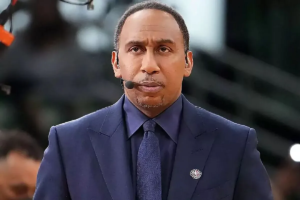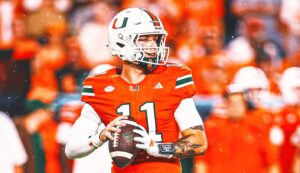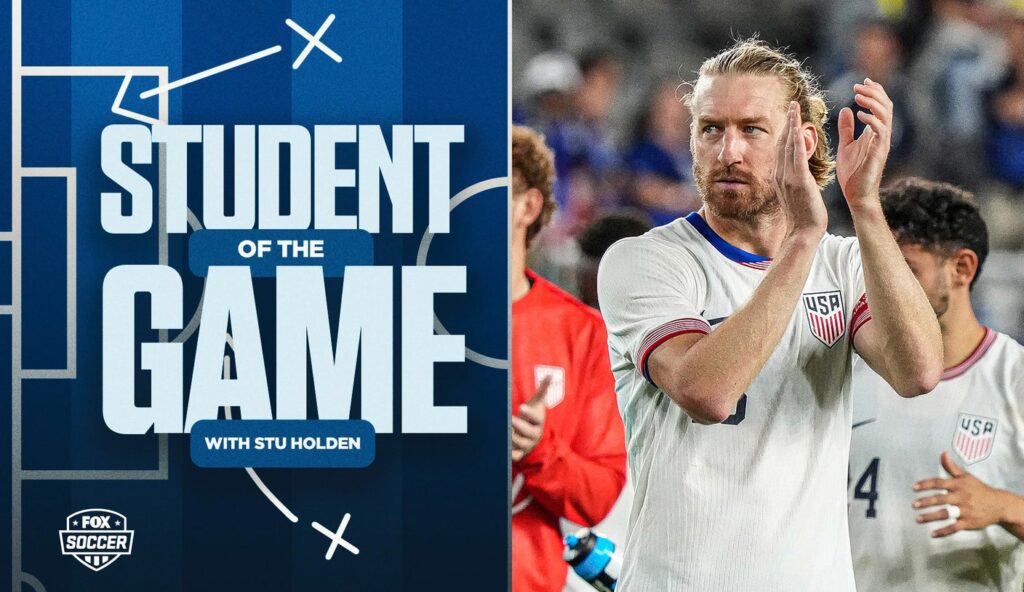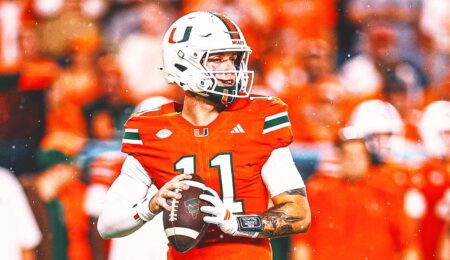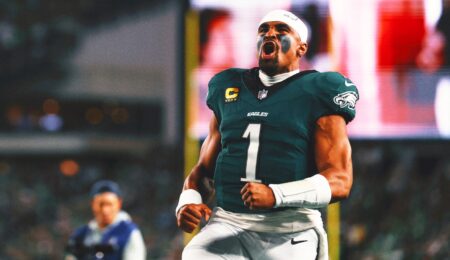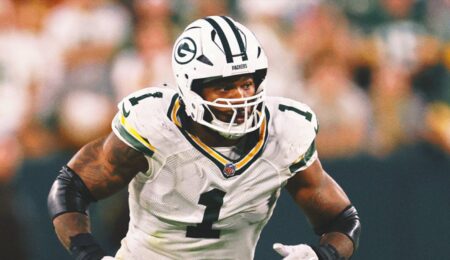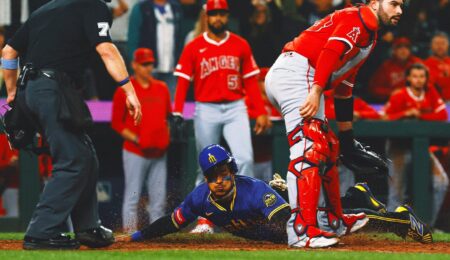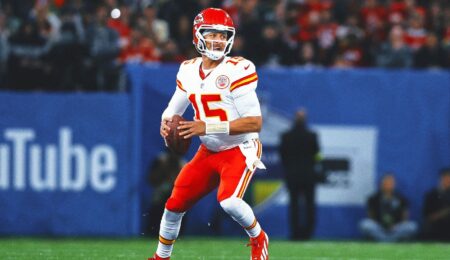Stu Holden
Soccer Analyst
This past international window for the United States men’s national team, which was highlighted by a 2-0 victory over Japan, might end up being more than a morale boost for a group that desperately needed it; it instead could be a confirmation of a significant learning under head coach Mauricio Pochettino — a tactical shift.
Following a challenging period — a seven-game winless streak against Top 25-ranked opposition — Pochettino’s decision to experiment with a three-back system, specifically the 3-4-2-1 formation, proved to be a resounding success.
If the September window’s primary objective was to learn and integrate new players, the formation itself emerged as the biggest winner. The adoption of the 3-4-2-1 system (hallelujah!), which had been previously used in brief spells, was deployed from the start against Japan and provided a potential path forward.
Pochettino’s blueprint for success has been questioned by many — but this was a good reminder that these things take time, and this appears to have been the last window for experimentation in terms of personnel and tactics. It might have taken longer than people had hoped, but while the Gold Cup was a hugely successful step forward in creating the culture that Pochettino wanted, the friendlies served as an important step in zoning in on the formation.
But the biggest takeaway is: Pochettino should stick to the 3-4-2-1 until the World Cup — and never look back.
Key Advantages of the 3-4-2-1 System
Defensive Solidity and Clean Sheets
(Photo by Dylan Buell/USSF/Getty Images)
The USMNT’s recent struggles against top-ranked teams were well-documented, marked by a seven-game winless streak. The win against Japan was not only a break from this trend, but it also resulted in the team’s first shutout against a Top-25 opponent since the 2022 World Cup match against Iran.
If you watched our “State of the Union” episode after the loss to South Korea, you’d have seen how animated and passionate I was about this team stopping conceding chances and switching to this formation — something I’ve been calling for dating back to the 2022 World Cup.
Heading into Qatar, there was a lot of concern about the center-back position, with both Miles Robinson and Chris Richards ruled out of the tournament with injuries. Then it was Tim Ream who emerged as this standout player and became a huge force in the back, and a big reason the U.S. had success in the back was the partnership he developed with Walker Zimmerman.
(Photo by Brad Smith/ISI Photos/Getty Images)
Since then, nobody has really developed in that position, and the trend of conceding goals and being unable to keep clean sheets against top opposition persisted, which is why I’ve continued to push hard that the U.S. should start to look at a 3-4-2-1 formation with an extra center back, as opposed to a 4-3-3. Tuesday provided some validation.
The shift to a back three gave the defense a sense of security and a noticeable increase in confidence from the center-backs, who were more aggressive in their pressure and challenges without the fear of a costly breakdown. The formation’s inherent structure, with an extra body in the backline, addresses a long-standing vulnerability in the United States’ defense, especially with the holding presence of Cristian Roldan or Tyler Adams in front of them. The solid block of five were rarely pulled out of position in transition opportunities.
Dynamic Fullback/Wingback Roles
The 3-4-2-1 formation unlocked a new level of freedom for the wingbacks. While this was evident with Max Arfsten and Alex Freeman, the potential of this system with the likes of Antonee Robinson and Sergino Dest is immense.
The tactical change allowed Arfsten and Freeman to operate as true wing-backs, playing to their strengths as attacking players. Arfsten, who had previously been a defensive liability in a four-back system, thrived in this role, delivering one of his better performances for the national team.
For a player like Freeman, the formation highlighted his offensive potential while also exposing his need for improvement in the final third — a crucial area for development if he is to become a high-potential fullback.
Improved Positional Balance and Attacking Freedom
Analyzing the team’s passing graphs and average player positions reveals a much more balanced and consistent shape.
Passing graphs vs. South Korea via TruMedia.
Passing graphs vs. Japan via TruMedia.
This tactical stability provided a “comforting predictability” for the players and allowed key game-changers like Christian Pulisic and Folarin Balogun to be more impactful in dangerous spaces. The system solves a long-standing tactical dilemma of where to play Pulisic, giving him a more central role where he can influence the game while lessening his defensive responsibility. The formation’s structure allows for a more aggressive counter-press, with the center-backs and holding midfielders confidently winning aerial battles and applying pressure higher up the field.
It’s important to note that as of now — Folarin Balogun is in pole position at the striker position, once again — and it will be up to Ricardo Pepi to work his way back in as he continues to work back from injury. It’s a good sign for USMNT fans in the way in which he moved off the ball, held up the ball back to goal, and ultimately finished off a chance in front of goal. Go with the Flo!
Areas for Improvement
Being in Sync on Pressuring the Ball
(Photo by Ben Jackson/USSF/Getty Images)
While the formation showed great promise, there are still areas to refine.
The U.S. struggled at times to apply consistent pressure on the ball from a lower block setup. Some of these issues are to be expected as this group had limited time to train it and develop partnerships/relationships across the field, which is what I would imagine the focus of the October window will be.
It starts with the center-backs and an understanding of the different roles within the back 3. If you are one of the wide defenders — in this game, Tim Ream and Tristan Blackmon — you have to pick the right moments to step into the midfield and be aggressive in your pressure. As you do that, there needs to be cover and balance from the other two defenders. Think about it like good rhythm and dancing — if someone is stepping to a different beat, it’s not going to work!
The other interesting role to watch is Chris Richards. Richards has played in this system consistently for Crystal Palace, but as a right-sided center-back. That highlights some of his real strengths as a defender ± his athleticism, his 1-v-1 defending, his passing, and his aggression. As the middle center-back, it’s more about the reading of the game and organization, and this will take a bit of learning for Richards if he is indeed going to play that role for the USMNT.
(Photo by Kirk Irwin/USSF/Getty Images)
The midfield pressing will also take some work and I saw moments where Pulisic and Alex Zendejas were unsure of which players to press from the Japanese midfield. In turn, we also saw the wing-backs in Freeman and Arfsten not rotating over to press the opposing midfielder as the center-backs shuffled across. That will come after the team has watched the tape and is a relatively easy fix that will absolutely improve with repetition (you could see some of the improvement after Pochettino made changes at half-time).
The biggest focus needs to be their understanding of the system and moving as a collective, as opposed to as individuals. When you achieve that harmony in defense, it can be liberating and give the team confidence.
Need For a Forward-Passing Midfielder
(Photo by Denis Doyle/Getty Images)
On the night, I felt that Roldan and Adams were generally solid as a partnership, especially considering this was Roldan’s first start for the USMNT in over two years. Defensively, they kept the shape well and were constantly an option in possession for the center-backs as the USMNT were trying to build through Japan’s pressure.
I did note, however, a number of times throughout the game where the passes were backwards, sideways and the “safe” option,” as opposed to taking some risk and bypassing players in the Japanese midfield. It presents the question: who can be that player for the USMNT?
When it was a three-man midfield of Yunus Musah, Weston McKennie and Tyler Adams, it was a midfield that relied mostly on the strength of the group: it’s athleticism. Remember the England match in the World Cup, where the three of them completely dominated England in midfield? The creativity was supposed to come from the wide areas, Pulisic and Tim Weah.
But if we’re now going to bring Pulisic and Tillman into the pockets and channels, we need players that can find them with the ball and maintain the defensive structure and organization of the team. That could really favor a player like Johnny Cardoso, who we have yet to see the best for the USMNT, and who has a good sense for rhythm, tempo, and forward passes.
Ideal Player Combinations (An October Roster Proposal)
Looking ahead to the next international window, the following lineup would be an intriguing test for this new system, combining established players with emerging talents:
- Goalkeeper: Matt Freese
- Back Three: Noahkai Banks, Chris Richards, Tim Ream
- Wingbacks: Sergino Dest, Antonee “Jedi” Robinson
- Central Midfield: Tyler Adams, Johnny Cardoso/Weston McKennie
- Attacking Midfield: Malik Tillman, Christian Pulisic
- Striker: Folarin Balogun
Stu Holden, a former midfielder for the United States men’s national team, is FOX Sports’ lead match analyst for its marquee soccer coverage.
What did you think of this story?

Get more from the United States Follow your favorites to get information about games, news and more
Read the full article here


